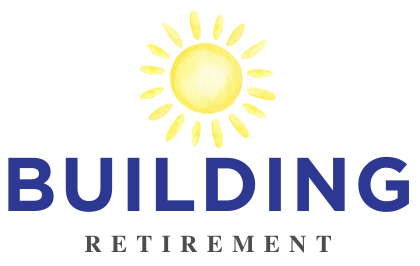As an entrepreneur, planning for retirement can be a unique challenge. You’re likely focused on growing your business, but it’s equally important to prioritize your future financial security. Tax-advantaged retirement plans offer a powerful way to save for retirement while minimizing your tax burden today. These plans provide entrepreneurs with the flexibility to tailor their retirement savings strategy to their unique needs and business structure. Here are 12 top tax-advantaged retirement plans entrepreneurs should consider.
1️⃣ Solo 401(k): Maximize Contributions for Small Business Owners 💼
A Solo 401(k) is designed specifically for self-employed individuals and business owners without employees (except for a spouse). It offers one of the highest contribution limits of any retirement plan, making it an ideal choice for entrepreneurs looking to save aggressively for retirement.
- How It Works:
- The Solo 401(k) allows for both employee and employer contributions. As the employee, you can contribute up to $20,500 (or $27,000 if you’re over 50) in 2022, plus a catch-up contribution.
- As the employer, you can contribute up to 25% of your compensation, with a total contribution limit of $58,000 (or $64,500 with catch-up).
- The plan also allows for Roth or traditional contributions, providing tax flexibility.
- Why It’s Beneficial:
The Solo 401(k) offers high contribution limits, tax-deferred growth (for traditional plans), and the ability to borrow against your account balance, making it an excellent retirement savings tool for entrepreneurs who want to maximize their contributions.
2️⃣ SEP IRA: Simple and Flexible for Business Owners 💡
A SEP IRA (Simplified Employee Pension) is another excellent tax-advantaged retirement plan for entrepreneurs, especially those with variable incomes or fewer employees. It’s easy to set up and has generous contribution limits, allowing for flexibility in contributions based on your business performance.
- How It Works:
- Contributions are made by the employer, with the business allowed to contribute up to 25% of compensation or $58,000 (whichever is less) for 2022.
- There are no annual filing requirements, and contributions are tax-deductible, lowering your taxable income for the year.
- Employees (if applicable) must receive contributions based on the same percentage of their income.
- Why It’s Beneficial:
The SEP IRA offers an easy-to-manage option with high contribution limits, making it ideal for entrepreneurs with fluctuating earnings. It’s also a good fit for those who want to contribute a substantial amount to their retirement while keeping administrative costs low.
3️⃣ SIMPLE IRA: A Low-Cost Option for Small Businesses 💰
The SIMPLE IRA (Savings Incentive Match Plan for Employees) is a retirement plan that works well for entrepreneurs with a few employees. It’s an easy-to-implement plan with lower contribution limits than the Solo 401(k) but still provides significant tax advantages.
- How It Works:
- As an employer, you can contribute either a fixed 2% of your employee’s compensation or match employee contributions up to 3%.
- Employees can contribute up to $14,000 in 2022 (or $17,000 if over 50).
- The contributions are tax-deferred, which lowers your taxable income for the year.
- Why It’s Beneficial:
The SIMPLE IRA is perfect for small business owners who want an easy-to-administer plan with decent contribution limits and low administrative costs. It’s a solid option for businesses that want to offer a retirement benefit but don’t want to deal with the complexity of more robust plans.
4️⃣ Defined Benefit Plan: Secure Large Contributions 💸
For high-earning entrepreneurs looking to make large retirement contributions, a Defined Benefit Plan offers one of the most powerful tax advantages. Unlike other retirement plans, this plan provides a guaranteed annual benefit at retirement, which can be tailored to provide substantial contributions.
- How It Works:
- A Defined Benefit Plan is designed to provide a predetermined annual benefit, often based on a combination of salary and years of service.
- Entrepreneurs can contribute up to $245,000 per year or more (depending on the plan’s structure), which is significantly higher than other retirement plans.
- Contributions are tax-deductible, which reduces taxable income during high-earning years.
- Why It’s Beneficial:
This plan is ideal for entrepreneurs who want to maximize their retirement savings and are looking to make large contributions in a single year. It’s particularly useful for business owners with a steady income who want to create a predictable retirement benefit.
5️⃣ Cash Balance Pension Plan: A Hybrid Approach 🔄
A Cash Balance Pension Plan is a hybrid retirement plan that combines the features of both a defined benefit plan and a defined contribution plan. It’s perfect for business owners looking for the predictability of a pension plan while maintaining the flexibility of contributions.
- How It Works:
- Each year, the business owner’s account receives a “pay credit” (based on salary) and an interest credit (determined by the plan).
- The account grows each year, and at retirement, the business owner receives a lump sum or annuity payment based on the accumulated balance.
- Contributions are tax-deductible, lowering your current taxable income.
- Why It’s Beneficial:
This plan allows for larger contributions than a 401(k) or IRA, making it an excellent choice for business owners who want to maximize retirement savings but also prefer the predictability of a defined benefit plan.
6️⃣ Keogh Plan: A Traditional Option for Self-Employed Professionals 📚
The Keogh Plan, also known as a HR10 plan, is a tax-advantaged retirement plan designed specifically for self-employed individuals and unincorporated businesses. It offers flexibility in how contributions are made and is ideal for those with fluctuating incomes.
- How It Works:
- Keogh plans allow contributions up to $61,000 (or 100% of income, whichever is less) in 2022 for profit-sharing plans.
- Contributions are tax-deferred, meaning you can lower your taxable income for the year you make the contributions.
- Keogh plans are highly flexible and can be customized based on the business’s cash flow.
- Why It’s Beneficial:
The Keogh Plan is beneficial for self-employed entrepreneurs looking for higher contribution limits than what’s offered by IRAs and simpler structures than defined benefit plans.
7️⃣ Health Savings Accounts (HSAs) for Retirement 🏥
While Health Savings Accounts (HSAs) are typically used for medical expenses, they can also be a powerful retirement planning tool for entrepreneurs. With triple tax advantages, HSAs are often underutilized as a retirement savings vehicle.
- How It Works:
- Contributions to an HSA are tax-deductible, reducing your taxable income.
- The funds grow tax-free, and withdrawals for qualified medical expenses are also tax-free.
- After age 65, you can withdraw funds for non-medical expenses without penalty (though they will be taxed as regular income).
- Why It’s Beneficial:
HSAs offer an additional retirement savings option with unmatched tax benefits. By saving for future healthcare costs, entrepreneurs can also build a tax-efficient retirement fund for other expenses later in life.
8️⃣ Solo Defined Benefit Plan: A Tailored Pension Option 🏦
For high-income self-employed individuals or business owners, the Solo Defined Benefit Plan offers a highly customizable pension plan, designed to provide a specific retirement benefit.
- How It Works:
- A Solo Defined Benefit Plan provides a fixed, pre-established annual retirement benefit (based on earnings and years of service).
- Contributions are made by the employer (the business owner), and they are typically much higher than those allowed in 401(k) or SEP IRA plans.
- Contributions are tax-deductible, reducing taxable income in the year they are made.
- Why It’s Beneficial:
This plan allows for very large contributions and is ideal for business owners seeking to maximize their retirement savings, particularly in their later years when they need to catch up on retirement savings.
9️⃣ Profit-Sharing Plans: Flexible Contributions for Entrepreneurs 💸
Profit-sharing plans allow business owners to make discretionary contributions to employees’ retirement accounts based on company performance. While traditionally used for employees, this plan is also ideal for entrepreneurs who want to share profits with themselves and their employees while benefiting from flexible contribution limits.
- How It Works:
- Contributions are made by the employer, usually as a percentage of profits or business revenue.
- The business owner can choose how much to contribute each year, offering flexibility based on the company’s financial performance.
- Contributions are tax-deductible, lowering taxable income for the year they are made.
- Why It’s Beneficial:
Profit-sharing plans are flexible and allow business owners to contribute larger amounts when their business is performing well. This makes it a great option for entrepreneurs with variable income who want to maximize retirement savings during profitable years.
🔟 Roth IRA for Entrepreneurs: Tax-Free Growth and Withdrawals 🏖️
A Roth IRA offers a unique retirement savings opportunity for entrepreneurs by allowing tax-free growth and withdrawals. While contribution limits are lower compared to other plans, Roth IRAs are a valuable tool for diversifying retirement savings.
- How It Works:
- Contributions to a Roth IRA are made with after-tax dollars, meaning they do not reduce your taxable income in the year they are made.
- The key advantage is that both the earnings and withdrawals are tax-free in retirement, as long as the account has been open for at least five years.
- The annual contribution limit for Roth IRAs is $6,000 (or $7,000 for those over 50) in 2022.
- Why It’s Beneficial:
The Roth IRA offers flexibility and tax-free withdrawals, making it an ideal option for entrepreneurs who expect to be in a higher tax bracket during retirement. It’s a great way to diversify your retirement portfolio with tax-free income in the future.
1️⃣1️⃣ Pension Plans for Entrepreneurs: Building a Steady Retirement Income 💼
Pension plans are traditionally used by large corporations, but self-employed entrepreneurs can also take advantage of this secure, long-term retirement savings option. By setting up a pension plan, entrepreneurs can guarantee themselves a fixed income stream in retirement.
- How It Works:
- The business owner (employer) contributes regularly to a pension fund, which then provides a guaranteed monthly benefit once the entrepreneur retires.
- Contributions are made based on a percentage of the employee’s income or a flat-rate amount.
- Pension plans can be designed with flexibility in mind, based on the entrepreneur’s specific retirement goals.
- Why It’s Beneficial:
A pension plan offers a predictable, stable income in retirement, which can be particularly valuable for entrepreneurs who want to ensure they have a reliable source of funds after leaving their business.
1️⃣2️⃣ 403(b) Plan for Non-Profit Entrepreneurs: Tax-Deferred Retirement Savings 🏢
While typically used by employees of non-profit organizations, the 403(b) plan can also benefit entrepreneurs who run tax-exempt organizations. It provides tax-deferred savings for retirement, much like a 401(k), with some unique advantages.
- How It Works:
- Contributions are made pre-tax, reducing taxable income for the year they are made.
- The 403(b) plan allows for employee contributions, as well as employer contributions (if applicable).
- Contribution limits are similar to those of a 401(k), with a catch-up option for those over 50.
- Why It’s Beneficial:
For business owners of non-profit organizations, the 403(b) plan offers the same tax-deferred benefits as a 401(k) but with fewer administrative requirements and costs, making it an efficient retirement plan for smaller businesses in the non-profit sector.
Closing Thoughts
As an entrepreneur, planning for retirement is crucial for securing your financial future. The tax-advantaged retirement plans outlined here offer a wide range of options that can help you maximize savings while minimizing tax liabilities. Whether you prefer flexibility, high contribution limits, or guaranteed income in retirement, there is a plan to suit your needs. By taking advantage of these retirement vehicles, you can ensure that your business continues to provide for you long after you’ve transitioned into retirement.



